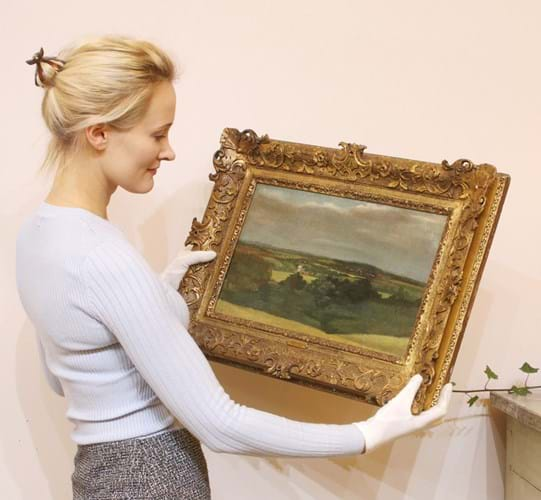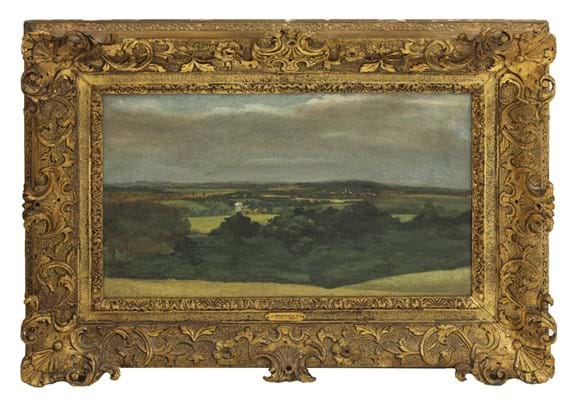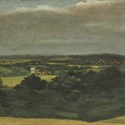Previously dismissed as a copy, the view of Dedham Vale has now been authenticated as an unrecorded landscape that includes a windmill owned by his father.
The 10½ x 17¼in (26.5 x 43.5cm) painting had hung in a London town house for many years but had been deemed a copy when previously examined by one of the main London auction houses.
Representatives from Sworders’ London office however visited the property earlier this year and picture specialist Sarah Flynn thought the picture worthy of further research. It was taken to Anne Lyles, the art historian and Constable expert, who later declared it “an exciting new discovery”.
“It is the dream of every auctioneer to discover a picture by one of the greats of western art,” said Flynn. “Dedham Vale is intimately associated with Constable’s life but the inclusion of one of his father’s mills in this picture makes it a particularly personal image.”
The oil sketch is believed to be a preparatory work for one of Constable’s large scale panoramas. The most famous representation of this particular landscape is Dedham Vale, Morning which the artist exhibited at the Royal Academy in 1811.
As with that finished picture, it shows the towers of various local churches in the distance which, according to Lyles, are often indicated by simple flecks of white paint.
“This is his personal shorthand for showing their position in the landscape as well as, no doubt, to show the way they catch the light depending on the time of day and position of the sun,” she said.
The viewpoint is thought to be the furthest east that Constable ever painted Dedham Vale, showing the tall tower of Dedham Church in the far right and the weatherboarded windmill at the village of Brantham in the middle distance. The artist’s father Golding Constable, who owned the mills at Flatford and Dedham, also apparently owned this windmill at Brantham.

‘Dedham Vale with Brantham mill and haystacks’ by John Constable, estimated at £100,000-150,000 at Sworders.
The fact that the picture once passed through the hands of Leggatt Brothers points towards a possible provenance direct from a member of the Constable family. The dealers had a close link with the Constable family and handled a large quantity of the artist's sketches in oil, watercolour and pencil in the late 19th and early 20th centuries.
The picture was later with the dealers Agnews and was sold in 1946 to Major AW Allen, an ancestor of the current owners.
The sketch has been dated to c.1809-10 on account of its stylistic handling and the use of millboard as a support.









